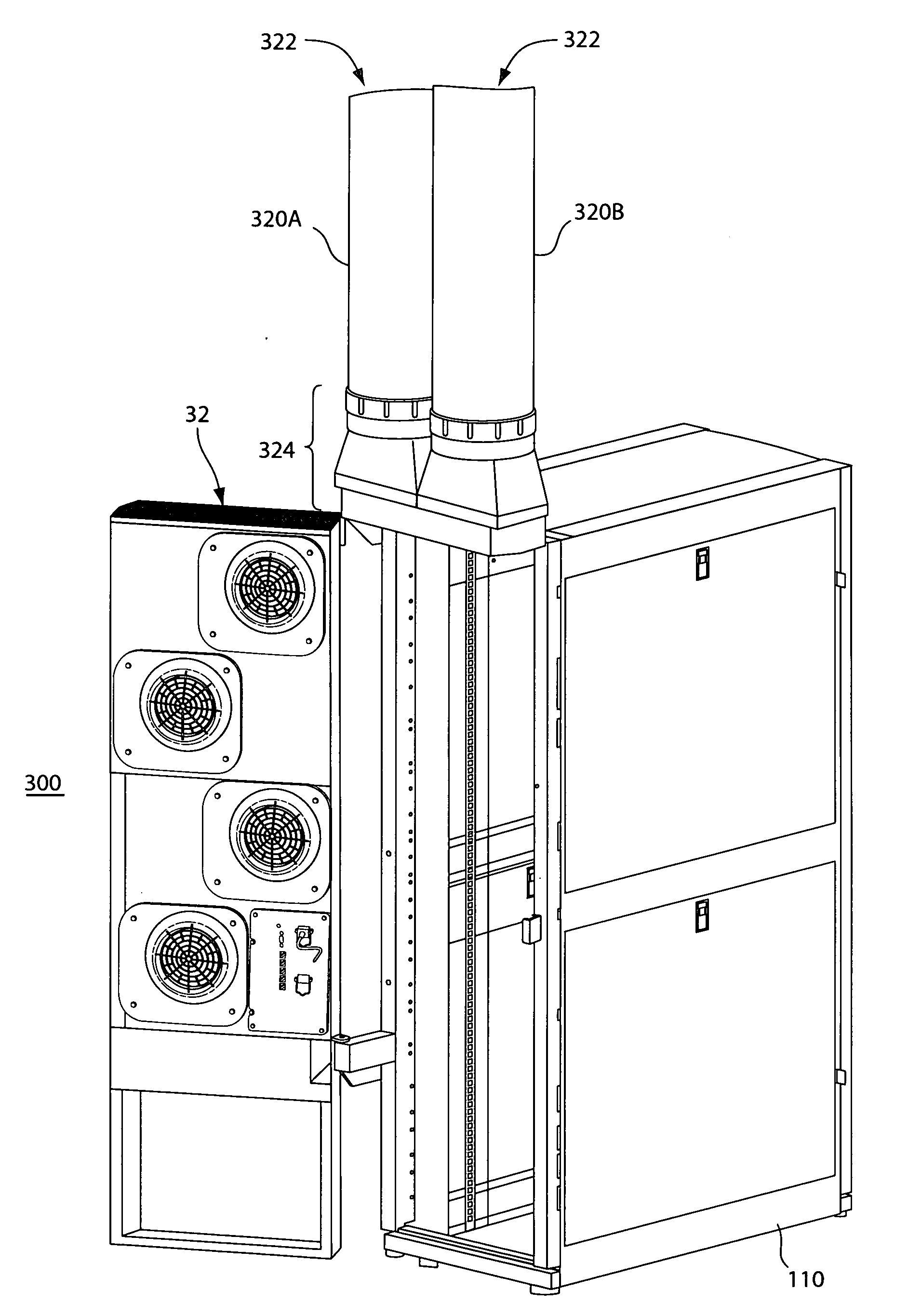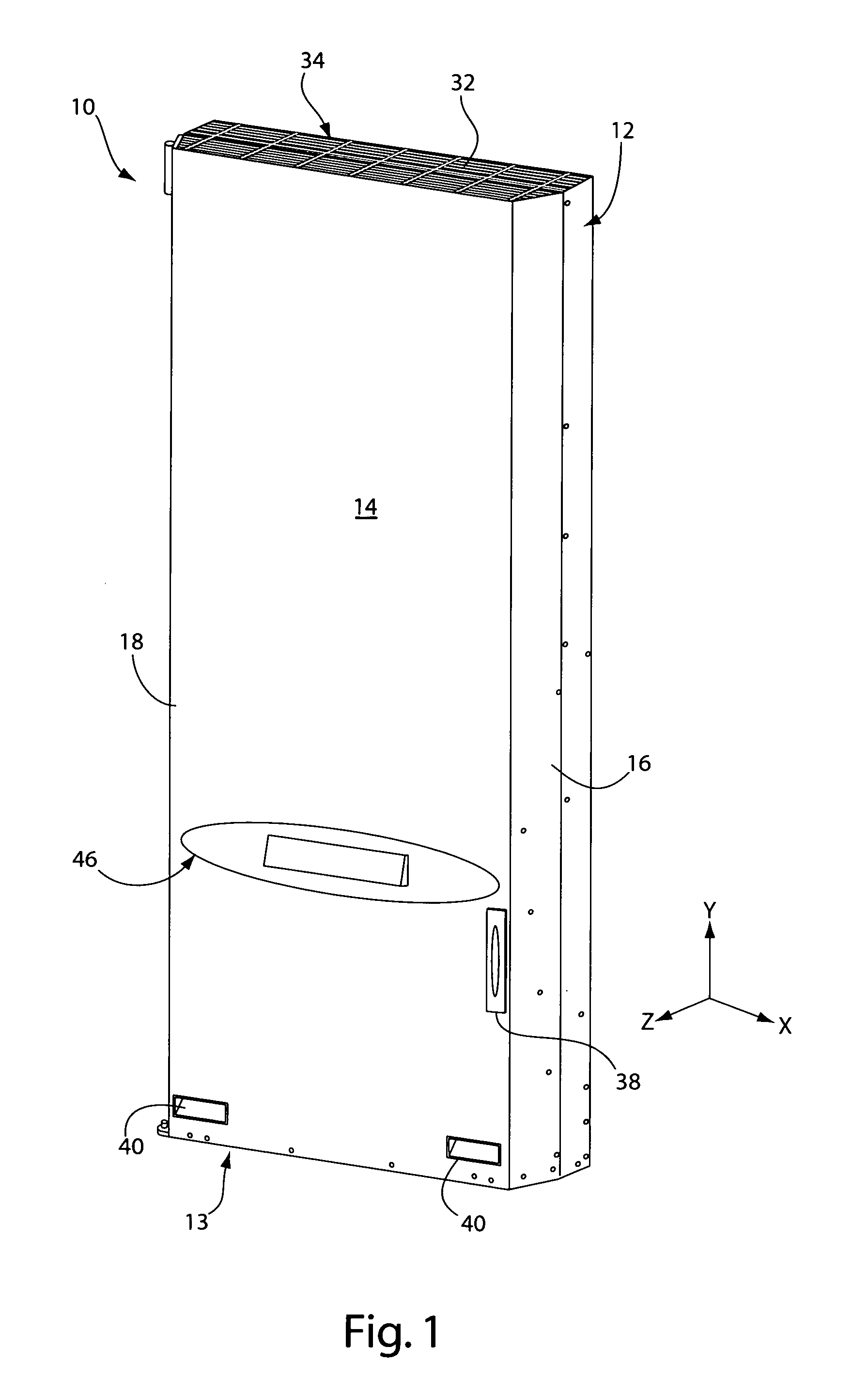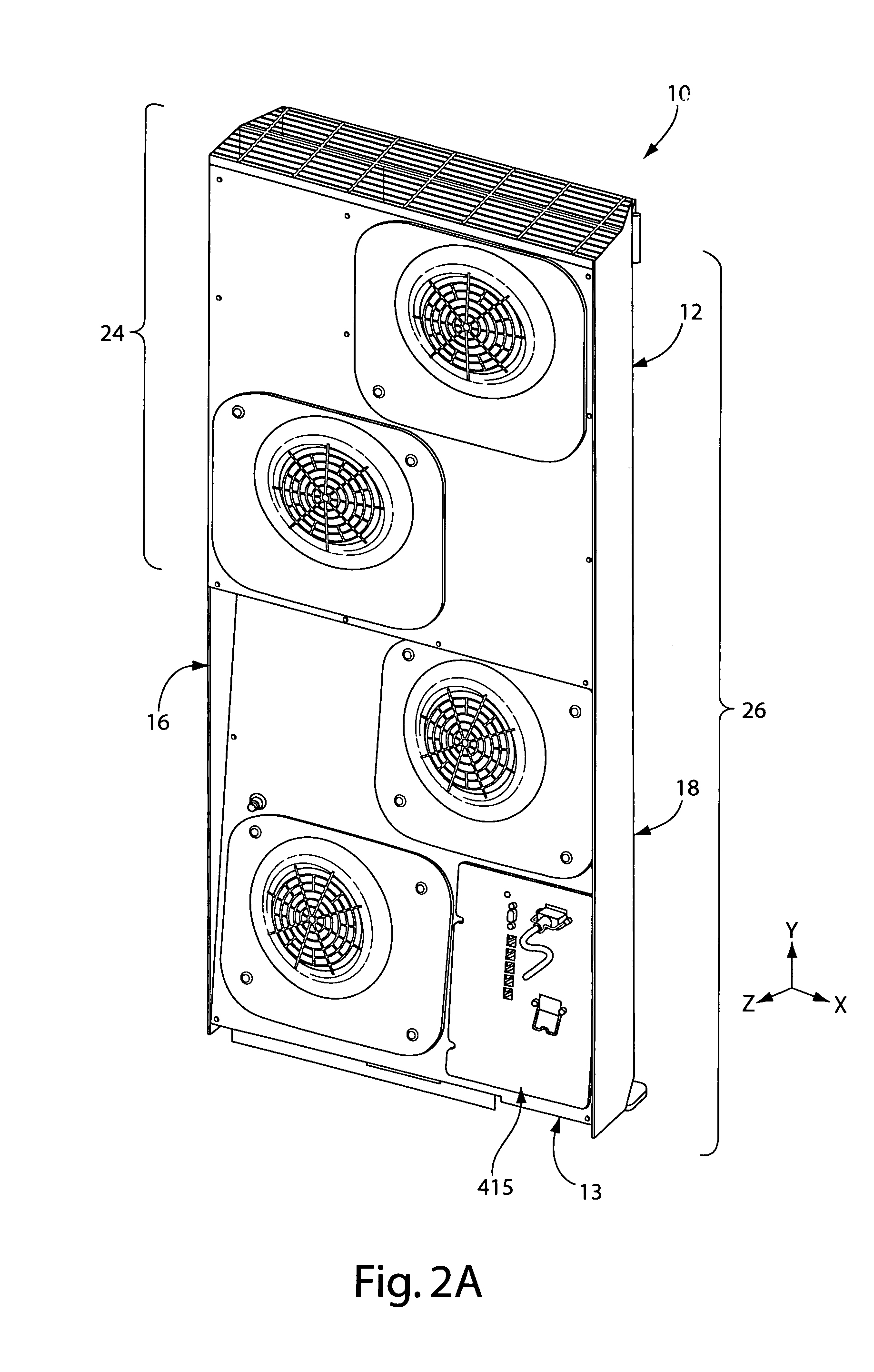Air removal unit
- Summary
- Abstract
- Description
- Claims
- Application Information
AI Technical Summary
Benefits of technology
Problems solved by technology
Method used
Image
Examples
Embodiment Construction
[0062]The invention provides an air removal unit for removing exhaust air from a rack or an enclosure designed to house information, communications and / or other types of electronic equipment. The air removal unit according to the invention is configured to remove exhaust air from an equipment rack or enclosure to help to manage the thermal output of rack-mounted equipment, such as servers, CPUs and other electronics. The unit is constructed and arranged to mount or install directly to an exhaust side of an equipment rack or enclosure and to serve as a moveable panel or door of the rack or enclosure. The configuration and design of the unit thereby enables the unit to install to existing racks or enclosures without significant retrofitting and further permits in-field installation, maintenance, service and replacement of the unit and its components.
[0063]The unit includes an upper and a lower exhaust module contained within a single housing wherein each exhaust module includes two fa...
PUM
 Login to View More
Login to View More Abstract
Description
Claims
Application Information
 Login to View More
Login to View More - R&D
- Intellectual Property
- Life Sciences
- Materials
- Tech Scout
- Unparalleled Data Quality
- Higher Quality Content
- 60% Fewer Hallucinations
Browse by: Latest US Patents, China's latest patents, Technical Efficacy Thesaurus, Application Domain, Technology Topic, Popular Technical Reports.
© 2025 PatSnap. All rights reserved.Legal|Privacy policy|Modern Slavery Act Transparency Statement|Sitemap|About US| Contact US: help@patsnap.com



